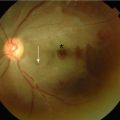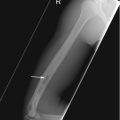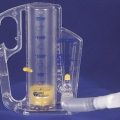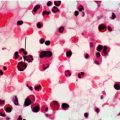and Paul Telfer2
(1)
Department of Haematology, Guy’s and St Thomas’ Hospital, London, UK
(2)
Department of Haematology, Royal London Hospital, London, UK
Pediatric Aspects
Overview
Children with HbSS should be seen routinely every 3 months up to the age of 2 years, and then 6 monthly. Children with HbSC can be seen every 6 months and then annually from age 5. The visit following each birthday should be scheduled as an annual review. Many clinics have developed out-patient proformas to allow a systematic annual evaluation of the child, to assess severity and to evaluate parameters which may be of prognostic value in the long-term. Measurements of height, weight and pubertal development are essential for assessing and comparing growth and development. Blood pressure, urinalysis and oxygen saturation may be predictive of long-term complications. Steady state blood parameters (including full blood count, reticulocyte count, renal function, percentage HbF and lactate dehydrogenase) have important prognostic and clinical value and should be assessed annually.
It is important to assess the parent/carer’s ability to provide care and support for the child. This depends on socioeconomic factors as well as on the level of engagement and understanding about the condition. In some cases, there is a persistent denial of the condition and an unwillingness to divulge the diagnosis even to close family members. Erratic adherence to prophylactic medication (especially oral penicillin) irregular attendance at out-patient visits, a tendency to under-estimate the significance of the condition and failure to attend hospital or to call the community nurse specialist during a significant acute illness are disturbing signs.
Other Common Pediatric Out-Patient Problems
Some of the common chronic problems often highlighted during out-patient visits are listed below. Management is challenging and general pediatric protocols are often poorly effective.
Fatigue
Headaches
Nocturnal enuresis
Pica
Persisting jaundice
Poor growth and delayed puberty
Schooling Issues
Schooling is a significant challenge for more severely affected children. Factors which prevent the child reaching their potential include:
Poor school attendance due to illness and clinic appointments
Lack of engagement in class activities due to fatigue and/or pain
Difficulty with engagement in gymnastics and sports due to fatigue and tendency of physical activity to provoke crises
A child will not reach their academic potential at school if experiencing frequent painful crises, and good out-patient control of sickle pain is essential. Minor crises can be managed at school, with time out in a quiet place for rest and supervized simple analgesia. It is not always necessary for the parent to be called to take the child home. Minimising the effort and fatigue in actually getting to and from school, and an agreement for restriction of outdoor activities are all important. The ability to undertake sports and gym activities is variable and needs to be assessed on an individual basis. Severely affected children get fatigued with moderate exertion. Being forced to engage in outdoor sports is a potent stimulus to crisis in many SCD children.
For children with stroke or silent infarct it is helpful to make a psychometric assessment of cognitive deficits. This will help in requesting and planning a Statement of Special Educational Needs. Simple inputs in class can be very helpful. For those with concentration/attention and processing difficulties, sitting near the front of the class, allowing more time for tasks, and training to break complex tasks down into easier steps can improve performance and attainment.
Stay updated, free articles. Join our Telegram channel

Full access? Get Clinical Tree







